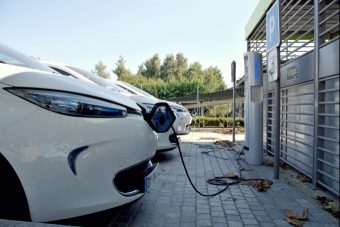
There is an old expression that says, “Never start vast projects with half vast ideas.” Converting America to electric cars will be one such vast project, one that will require a quantum leap in EV charging infrastructure, but how many chargers will be needed? How many should be Level 2 and how many should by DC fast chargers? Where should they be installed?
Answering those questions accurately will be essential to avoid wasting precious dollars on charging equipment that is the wrong type or located in the wrong places.
The National Renewable Energy Laboratory, part of the US Energy Department, has studied the problem and released a new report that attempts to answer exactly those sorts of questions. In general, its research shows that the correct answer in almost all cases is, “It depends.”
On what? Well, it depends on how many plug-in hybrids are on the road, what roads they are on and what their average range is. The same questions pertain to battery electric cars. The proportion of plug-ins to battery electrics also greatly influences the results.
By definition, plug-in hybrids have smaller batteries than battery electric cars. That means they become depleted more quickly but take less time to recharge. And of course plug-ins all have some sort of onboard range-extending engine, so running out of battery power is not as critical as it is to people who drive fully electric cars.
“The potential number, capacity, and location of charging stations needed to enable broad PEV [defined by the NREL as an vehicle with a plug] adoption over the coming decades hinge on a variety of variables,” said Eric Wood, lead author of the National Plug-In Electric Vehicle Infrastructure Analysis. “NREL’s analysis shows what effective co-evolution of the PEV fleet and charging infrastructure might look like under a range of scenarios.”
The researchers looked at the need for charging infrastructure along interstate highways and other major transportation routes. They also examined the differing needs of rural versus urban drivers. They conclude that a few hundred DC fast charging stations along major highways would satisfy the anticipated need, but when it comes to cities and rural areas, calculating the need becomes much more complex.
About 8,000 DC fast charging stations would be needed to provide a minimum level of urban and rural coverage nationwide. The need for Level 2 chargers is quite different, however. Assuming 15 million cars with plugs on the road, it could vary from a low of 100,000 to more than 1.2 million.
Why such a wide range? It all depends on whether drivers prefer long-range or short-range vehicles and the proportion of plug-in cars versus fully electric cars.
“This study shows how important it is to understand consumer preferences and driving behaviors when planning charging networks,” said Chris Gearhart, director of NREL’s Transportation and Hydrogen Systems Center.
What the study does not do is measure the impact of Tesla’s Supercharger network. Tesla is the only car company that has fully committed to building high-power and medium-power charging equipment for the owners of its electric cars. While others are thinking, planning, studying, and consulting, Tesla is doing. The unanswered question is whether that system will one day be available to non-Tesla EV drivers and, if so, on what terms?
Source: cleantechnica.com

